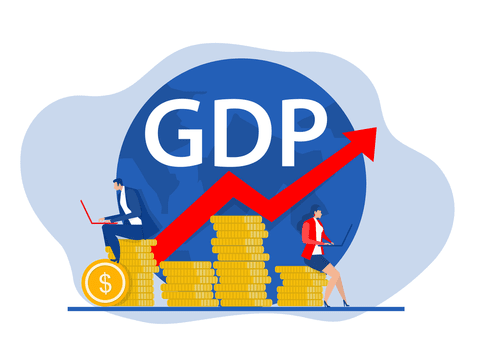A pickup in services, strong government-led capital expenditure and an uptick in consumption-oriented sectors, especially high-end consumption, has supported growth in the July-September quarter, with economists pegging Gross Domestic Product (GDP) growth rate at 6.7-7 per cent. Though growth rate is seen slowing down sequentially from the first quarter’s (April-June) growth rate of 7.8 percent amid concerns over external demand, domestic consumption demand and services in totality are likely to have contributed the maximum share to the growth for the second quarter.
Closer to the data release of the Q2 GDP data, which is slated on November 30, many economists are now expecting growth rate to be near 7 per cent. The overall growth forecast for financial year 2023-24 is, however, being seen around 6.2-6.7 per cent as growth may moderate in the second half of the year given the input cost pressures and waning of base effect.
Both the government and the Reserve Bank of India (RBI) have forecast a growth rate of 6.5 per cent each for the financial year 2023-24. The RBI has projected 6.5 per cent growth for July-September and 6.0 percent for October-December. Last month, RBI Governor Shaktikanta Das said the GDP growth rate for the second quarter may surprise on the upside.
“Underlying growth trends continue to look robust in India, with activity underpinned by domestic consumption, high levels of state-led capex, and strong growth in the utilities sectors. We expect growth rates in Q3 to improve in basic utility sectors (ie, mining and electricity generation), as well as in manufacturing, construction and public spending. These will likely help mitigate the loss of momentum in financial services and trade & transport.
Export growth is likely to stay weak, but the overall impact of sustained improvement in services exports, coupled with lower imports, implies that the contribution of net exports to GDP was a much smaller drag in Q3 (July-September) than it has been in the preceding quarters,” Rahul Bajoria, MD & Head of EM Asia (ex-China) Economics, Barclays said in a note. Barclays has forecast growth to be 6.8 per cent for July-September.
Government expenditure – Centre and states, has supported capex cycle recovery. “The combination of government capex and strong growth in real estate services has supported the construction sector with pick-up in steel consumption and cement production,” IDFC FIRST Bank said in a note. IDFC FIRST Bank has projected Q2 growth rate to be 6.7 per cent.
“Domestic economic activity in Q2 has been supported by robust agricultural performance, sustained buoyancy in services, strong capital expenditure by Centre (49 per cent of budgeted) and states (32 per cent of budgeted) and a robust pickup in consumption expenditure,” State Bank of India Research said in a note.
As per latest data from the Controller General of Accounts (CGA), the government spent Rs 1.16 lakh crore as capital expenditure, which is about 49 percent of its full-year Budget target.
In terms of the sectoral breakdown, services are expected to be the largest contributor to growth despite slower expected growth in the financial services and ‘trade hotels and transport’ categories, economists said. “Agriculture might be a slight dampener but services have revived much stronger than expected. In totality, services have performed better than the manufacturing sector. Government-led capex has also been strong even though there are questions about it being sustainable. These along with high-end consumption seems to have contributed to growth,” Devendra Kumar Pant, Chief Economist, India Ratings and Research said.
India Ratings and Research has projected growth to be at 6.9 percent in the July-September quarter.
However, concerns on global growth remain, which in turn are likely to impact export demand. “With a palpable slowdown of major economies globally, export competitiveness seems to have hit a temporary roadblock. However, the growing commitment of global behemoths to incrementally source components and parts, apart from local manufacturing commitments aimed at exports, augurs well for the sector in times ahead,” the SBI report said. SBI’s Group Chief Economic Adviser Soumya Kanti Ghosh said Q2 GDP growth rate is seen at 7 per cent, with a likelihood of it even topping 7 percent.
ICRA, which estimates Q2 GDP growth at 7 per cent topping the Monetary Policy Committee’s forecast of 6.5 per cent, said growth may slow down in the second half of the financial year ahead of the elections as the impact of slowing capex and tempering of demand because of monetary tightening shows through in full. “Looking ahead, uneven rainfall, narrowing differentials with year-ago commodity prices, the possible slowdown in momentum of government capex as we approach the Parliamentary Elections, weak external demand and the cumulative impact of monetary tightening are likely to translate into lower GDP growth in H2 FY2024. As a result, we maintain our FY2024 GDP growth estimate at 6.0 percent, lower than the MPC’s projection of 6.5 per cent for the fiscal,” Aditi Nayar, Chief Economist, Head-Research & Outreach, ICRA said.




